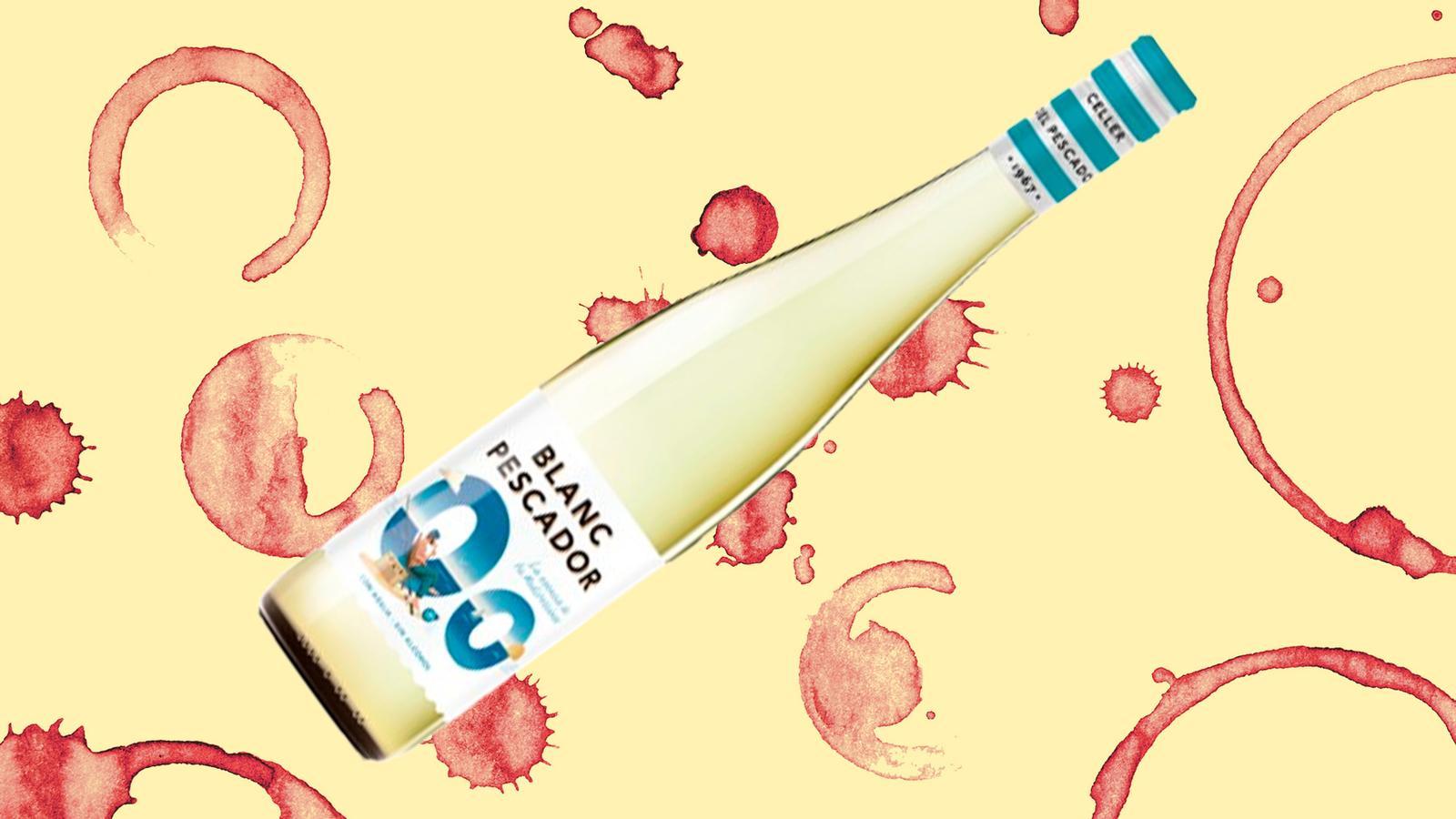If the stopper is cork, it should go in the organic waste bin. With proper treatment, we'll obtain compost for the plants. If it's metal or plastic, it should be placed with the containers. It can be recycled and new ones made.
Is dealcoholized wine wine? In any case, "well, it comes from grapes, let's see what it says."
Today I'm talking to you about a rarity not suitable for wine lovers, but it's a rarity that is becoming less rare.


- Variety: Macabeo, Xarel·lo, Parellada
- DO Catalonia
- Vintage: NV
- Producer: Fisherman's Winery
- To sunbathe, listening to the summer song and reading Cátame , by Meritxell Falgueras
Is alcohol-free, or dealcoholized, wine wine? There will be those, like me, who say no, that it isn't, that it's something else, and a very worthy one at that. But then you have to wonder why we don't ask ourselves if we're actually beer-free. They make ads, ads that make you think, more than about the product authorized for TV, about the brand behind it. We've normalized it, alcohol-free beer. Bricklayers, people who work in hazardous jobs, for example, you see them drinking it for breakfast. And you think, then, that this could happen with wine. Pregnant women, drivers...
The wine—the non-wine—of today is a dealcoholized Blanco Pescador. The classic and famous Blanc Pescador, which is still the first "sparkling wine" to hit the Catalan and Spanish markets and is among the five best-selling wines in Spain (along with, for example, Extríssim Bach, Diamante, etc.). Perhaps some of you remember its commercials. How long ago did wine start being advertised on TV? Fifteen years ago? You saw a fisherman, of course, with his lute, and it ended by advertising the wine, making that connection we now make with beer: it was the essence of the Mediterranean.
Marta Gangonells from Sitges, the manager of this not-so-modern wine, says that summer comes to mind. Terrace, rice, friends... These nouns. The base wine is the same. The cava blend: Macabeo, Xarel lo, and Parellada. The bubbles come from a secondary fermentation. In other words, it wants to be the same legendary sparkling wine of 50 years ago, but without the alcohol. These drinks are becoming better and better, so that they don't lose their profile and aroma.
It's still an aromatic and citrusy drink, reminiscent of fresh and light semi-sparkling wine, pleasant and easy to drink. It's not overly aromatic, although much of the blend is macabre.
And how is it made? As if they were making "normal" wine. And then, through reverse osmosis, they extract the alcohol without altering, if possible, the aroma and flavor: It maintains the structure, which is difficult, because when a wine has no alcohol, without structure, Marta says, "it's left naked." And as for sales, no one doubts that this is a great moment for these alternatives. "Right now I can tell you it's circulating more than we expected. They sell it to most chains. Bonpreu, Corte Inglés, Carrefour... To people who say it's not wine, I'd say to take down the barrier. They ask you: 'Alcohol-free wine? Is it just must?' No! It's made like a traditional wine, there is like a traditional wine, there is! dearand process".
Today I'm talking to you about a rarity not suitable for wine lovers, but it's a rarity that's becoming less rare. We must talk and taste. Without forgetting that wine, the juice of fermented grapes, is our culture.
If you are curious to try the recommended wine, buy it here or get the pack of August with a 15% discount.
